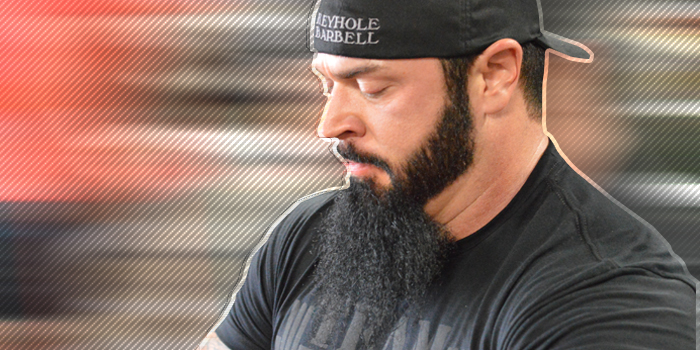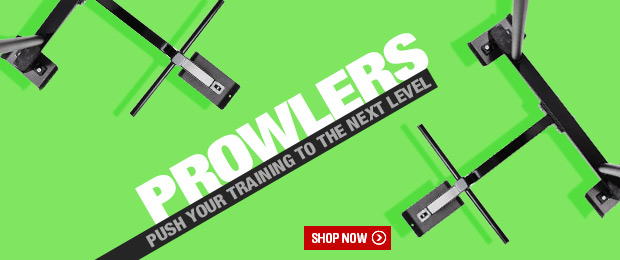
I am sitting in a Starbucks where I come sometimes to write. It's a good spot, because there is plenty of caffeine and everyone here has already asked me how much I lift, so I don't get bothered very often.
A little earlier today I posted on my socials that I was wiling to take some more ideas for articles and, as usual, the people came through. Those of you who participate and contribute ideas: you are doing your part. So, thank you.
One of the ideas presented, or I should say quite a few of the overlapping topics presented, fit quite nicely into an article that I've been meaning to write for some time now. The title paints a decent picture of what I am going to be talking about: Beyond the Barbell. In this piece we are going to take a look at the role of exercise for powerlifters, beyond actually lifting.
For our purposes, I am going to break the types of exercise I am talking about into two groups.
RECENT: An Unconventional Motive for Muscularity
The first is something which has been relegated to punch-line status in much of the powerlifting community: cardiovascular exercise. Before you chuckle, consider that a good number of us are overweight and eat like total shit. So, disregarding cardio effectively completes the heart attack holy trinity and almost certainly unlocks that early admission VIP pass to death by cardiovascular disease. Now put that fucking donut down and prepare to get your shit together.
Even if you're already doing some cardio, you'll still benefit from the second type of non-lifting exercise I am going to cover: bracing and activation warm-up exercises.
This has become a popular topic as of late, and for good reason. These exercises are a game-changer for anyone recovering from back, hip or shoulder injuries. And if you're interested in lifting more weight, correctly, improving stability and protecting those areas from getting injured in the first place, you might also want to give these a try. We will come back to activation/warm-up stuff, but let's start with discussing the importance of cardio training.
On my social media post, someone asked me to include in this article specifically how a powerlifter should incorporate conditioning during meet prep. The best advice I can give you for that is to integrate it into your workload before you start preparing for a meet and maintain it throughout. The reason being that it is much easier to maintain a reasonable level of cardiovascular fitness than it is to develop it while at the same time attempting to peak for a meet.
This is the same reason I recommend powerlifters do a modest amount of cardio year round. Staying in shape is a lot less taxing than getting in shape. The extra effort it takes to do conditioning work once a lifter is out of shape keeps most from regaining that capacity once it's gone, sometimes for years.
It's kind of funny really, powerlifters seem to be willing to do anything to avoid conditioning. They will go on long fat loss diets and actually brag that they were able to lose x number of pounds without doing any cardio. Never mind the fact that a lack of this type of exercise is one of the greatest risk factors for cardiovascular disease, you know, the leading cause of death on the planet. I have already touched on that, I'll stop.
Even if you truly couldn't care less about living past forty, there are still plenty of reasons to include a half decent amount of cardio in your regimen.
You don't want to be the dude (or chick) who can't have sex for more than three minutes without looking and sounding like they're going to stroke out, for one. Do yourself and and your potential indiscretions a favor and walk your tired ass around the track for an hour a few times a week. Think of it as training for a sex PR.
This one is directed more toward the guys. How about some punk-ass kids break into your house or steal something out of your car? You need to be able to come barreling down the street after them like the mad scientist kabuki monster Chris Duffin, right?
But if your folded in half, gasping for air only a quarter block into it, that's not going to be very menacing, is it? In fact, they might come back and add insult to injury by kicking your teeth out before you can catch your breath.
So, how should a powerlifter work conditioning into their program? The only wrong way to do this, in my opinion, would be all at once. Don't go from doing zero cardio to trying to run for an hour, five days a week.
RELATED: Tuning the Human Body for Performance: A Conversation with Dr. Stuart McGill
Something I harp on a lot is the fact that recoverability and adaptability are finite capacities. You only have so much to go around. This is no exception. If you start spending too much of these capacities to recover from and adapt to extreme demands from cardiovascular conditioning, out of nowhere, it will certainly effect your normal work. Every aspect of a program effects everything else. The 5thSet methodology accounts for this and allows for about nine miles per week of conditioning work, which is what I recommend for a powerlifter. I typically advise my people start with half that amount, split up over three sessions. So, a mile and a half, three times per week, while maintaining their normal training. After the first week, I have them add a half mile per week to each session until they reach nine miles.
I don't care much whether someone chooses to run intervals, jog, or walk for that distance. Even if you walk, this puts you right above the forty minutes, three times per week minimum recommended by the AHA for lowering blood pressure and cholesterol. And you won't be a sweaty mess every time you walk up the stairs as an added bonus.
If you are able to do your cardio outside, I highly recommend it. There may not be any obvious physiological benefit, but humans thrive psychologically from exercising in the fresh air of the great outdoors (even when it's cold). And psychological health contributes to physical health, absolutely.
I don't pretend to be the final say on anything and I'm not a doctor. However, I am going to share my own experience on this next topic with you, as well as some of the methods I've used to help others, so that you can possibly benefit in the same way we have.
When I returned to training after the spine surgery I had a couple of years ago, things were sketchy to say this least. There was very little I was able to do without irritating the effected root nerve. It was a very scary process and I had to learn to brace while moving and lifting all over again.
The exercises I'm going to share with you now were a big part of how I got my back healthy and stronger than it has ever been. I've drawn from many sources including Dr. Stuart McGill, Donnie Thompson, and my teammate Chris Duffin. I've modified and combined things to create a movement cycle I feel works very well. I do these activation/warm-up movements before every training session and anytime my back lower back gets irritated, before it becomes an issue. At this point, going through a couple of rounds of these movements will enhance my body's motor control system and improve its ability to stabilize the spine, correcting any discomfort I am experiencing, immediately. I can honestly say I do not suffer with back pain of any kind anymore. For someone who could not stand or walk two years ago, that is quite a statement. It's worth mentioning that back pain aside, I cannot explain to you how much these movements have improved my lifting.
The Cat/Camel exercise is intended to reduce spinal friction and it is a type of "nerve flossing" for the root nerves of the spine. I was first introduced to this exercise by a good friend of mine who is a chiropractor and researching it actually led me to some of the other things I do. I've kept it in my arsenal since the day I learned it. This is always the first movement in the cycle.
The Bird-Dog is a movement that is typically performed by starting on all fours, bracing the midsection, maintaining a neutral spine and extending either arm and its contralateral leg for a timed static hold, then repeating with the opposite limbs. I do these a little differently in that I perform the extending and lowering of the limbs as successive repetitions and finish with a static hold. These seem to be more effective if the focus is put on bracing the midsection as the arms and legs move up and down for a number of reps and then held static for a number of seconds before switching sides. I have demonstrated in the video.
The Side-Bridge is a pretty well known exercise. Again, these are typically performed in a static manner, but I do them for repetitions, while bracing the midsection, before employing a static hold. At this point I will move into a rolling-bridge and repeat the movement on the other side. For these I do five repetitions and a five-second hold. I've demonstrated this as well.
The Contralateral Core Lift is an awesome exercise I got from Chad Waterbury. Basically, while maintaining a neutral spine and bracing your midsection, the objective is to lift the body in a controlled manner by pushing through the elbow and contralateral knee. He made a very good video for these so rather than make my own I will just link you to his.
All of the movements I listed above are performed before every single training session. Additional, more specific movements are performed afterward, depending on what the session is.
For example, I do an exercise I got from Donnie Thompson called Caterpillars, and another called Butt Walks, after a couple of cycles of the movements listed above, before every deadlift session.
Before squatting, I do split squats with the back foot elevated, focusing on bracing and balance. I might also finish with this movement using weight to help build VMO and ankle strength.
I could probably write a book about these activation exercises, and I might even do that at some point, but I think I've gone about as far into as I can for this article. Please enjoy and share, and as always, feel free to contribute ideas for anything else you'd like to learn in the future.











